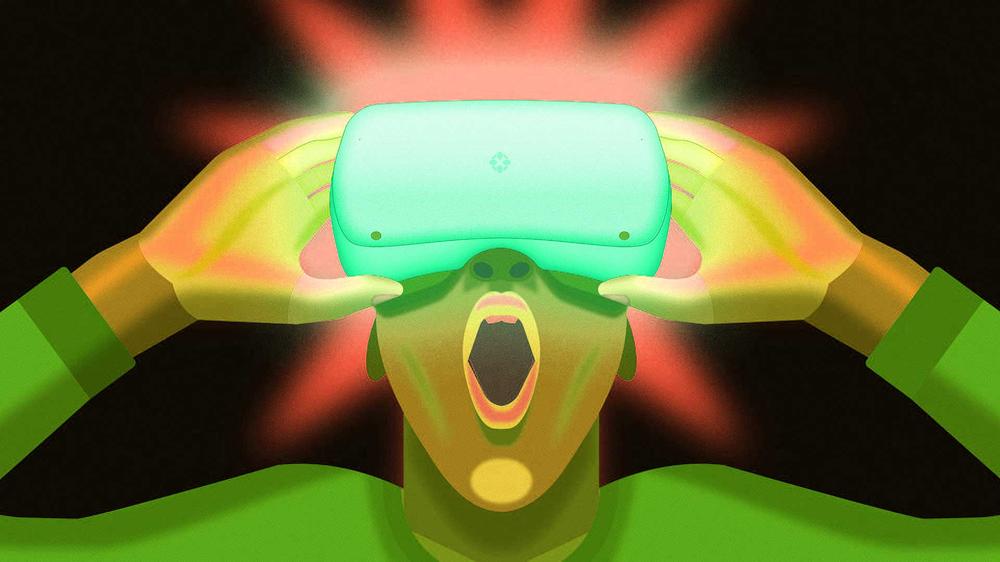The Meta Quest 3 strikes the sweet spot between decent price and cracking quality, which is why it takes the crown as our pick for 2025. That said, there are other heavy-hitters worth a look if you want to dive headfirst into virtual worlds. I've rounded up the best of the bunch after clocking a frankly embarrassing number of hours strapped into these gizmos.
One thing to flag: Australia and New Zealand seem to have been left off the VR invite list. Some of the fancier rigs - the Valve Index springs to mind - are basically import-only and cost a small fortune once they land here. To save you the grief (and your bank account), I've left those out.
TL;DR – These Are the Best VR Headsets for 2025:
This guide contains contributions by Danielle Abraham.
Overall Best VR Headset
Best Budget VR Headset
Best VR Headset for PS5
Our list above covers our favourite headsets, but it is far from complete and more models are always on the horizon. When choosing the right VR headset for you, keep these key factors in mind:
Platform
The best headset is the one you will actually use. If you already own a powerful gaming PC or are willing to splash out on one, and you have enough space for room-scale VR, a SteamVR headset will give you the richest overall experience.
If you prefer a standalone option without a PC, or want the flexibility of both, the Meta Quest 3 or 3S is the way to go.
Games
Exclusive titles can be a deciding factor. The excellent PSVR2 has its own strong library, but that will not help if your heart is set on Half-Life: Alyx. Choosing PSVR2 also means relying on Sony to keep pushing new content, while PC platforms give you more flexibility and longevity.
SteamVR runs on nearly all top PC headsets, which is a big advantage. Meta has its own exclusives too, though playing them on non-Meta gear with Revive is hit-and-miss. Apple Vision Pro currently does not support VR gaming at all, and only a handful of Apple Arcade games make use of AR on the headset.
Resolution & Refresh Rate
Performance is critical not just for visuals but for comfort. Low resolution can create the dreaded screen door effect, while poor frame rates can cause eye strain and even motion sickness. Issues are most common below 90Hz, though it varies from person to person.
Stationary vs Room-Scale
The most immersive VR experiences come from room-scale setups. Six-degrees of freedom lets you move, crouch, jump, and explore naturally. Not everyone has the space or mobility for this, though.
If you are tight on room or mainly want to watch films and similar content, a stationary option that tracks only head movement may suit you better.
Tracking System
Your tracking method can shape how the headset feels to use. The Meta Quest 3 and similar devices rely on inside-out tracking, with cameras and sensors built directly into the headset. This avoids the need for external sensors, but accuracy can be lower.
If you have a small play space or want hassle-free setup, inside-out tracking is a good fit. If you are after the best precision and have the space for it, a headset with external tracking is the better call.
Wired vs Wireless
Back in the early days, there was no debate at all since every VR headset came with a cable. These days, though, wireless models are popping up everywhere. Like most choices in this space, it boils down to freedom versus performance.
Going wireless means you can roam around without tripping on cords and enjoy a bigger play area. Still, once you get used to a cable, it isn't that much of a hassle, and the payoff is better bandwidth. That usually translates to sharper visuals and higher overall image quality. A wired connection also saves you the headache of keeping an eye on battery life.
If that matters most, stick with wired. On the other hand, some premium headsets let you go both ways, which is a neat compromise if you're on the fence.
The potential of VR goes way beyond gaming. Imagine catching live gigs from your favourite bands, zipping off to distant planets, or exploring new worlds without leaving the couch. With the right gear, you'll be stepping into a fresh frontier of fun, learning, and more.
What's the Difference Between VR and AR?
Virtual reality (VR) and augmented reality (AR) often get lumped together in gaming chats, but they work in very different ways.
AR is easier to get into since most people can access it through a smartphone. It overlays digital elements on the real world using your phone or a headset camera. A classic example is Pokemon Go, where creatures and PokeStops pop up on your screen as you wander around outside. You can interact with them through your device, but of course, they aren't really there. AR simply layers extras onto your actual surroundings. Apple's Vision Pro leans heavily on AR in clever and playful ways.
VR, on the other hand, ditches the real world altogether. Everything you see is computer generated, replacing your environment completely. The headset blocks out reality so you're fully immersed in a digital setting. Think Half-Life: Alyx, which throws you into a gritty sci-fi future, or Gran Turismo 7 on PSVR 2, where you sit right in the driver's seat.
What VR Doesn't Need a PC?
Most VR rigs need a solid PC to run demanding games, but there are standalone headsets if you'd rather skip the extra gear.
Meta's Quest 3 and the rest of the lineup work just fine on their own thanks to strong processors. You can still connect them to a PC with a link cable if you want to dip into PC VR. The Pico 4 is another solid standalone pick, and HTC's XR Elite also runs apps and games without a tether.
If you've got a PlayStation 5, the PSVR 2 is a fantastic option, although it only works with the console, not PCs. Budget choices exist too, like phone-based headsets such as the Atlasonix VR, but expectations should be kept low with those. Apple's Vision Pro is in a different league again, a self-contained powerhouse that also plays nicely with MacBooks for work.
Does the Nintendo Switch have VR?
It does, but it's pretty basic. The Nintendo Switch has a handful of VR titles, mostly relying on the screen slotted into a headset. The Nintendo Labo VR Kit is the most popular option, with quirky cardboard builds you put together yourself. There are sturdier strap-on headsets, but they don't get close to the immersion of dedicated VR rigs. You can technically link the Switch with more advanced headsets, though it requires extra gear and a messy setup. If you're chasing proper immersion on the handheld, a good pair of Switch headphones will do more for you than fiddling with VR.
So What Happened to Windows Mixed Reality?
Microsoft is pulling the pin on Windows Mixed Reality. Support for the platform, including the Portal app and SteamVR driver, is being phased out. The headsets will keep working with Steam until late 2026, but after that there'll be no updates or tech support. Oh well.
When Do VR Headsets Go on Sale?
Some of the best VR gear never gets discounted, but you can snag deals a few times a year. Amazon Prime Day in July often has strong discounts, especially on Meta Quest models. Black Friday and Cyber Monday are also safe bets if you're hunting bargains, and occasionally other headsets get price cuts too.

 Best GPU 2025: Pick the Best Graphics Card for Your Gaming PC
Best GPU 2025: Pick the Best Graphics Card for Your Gaming PC